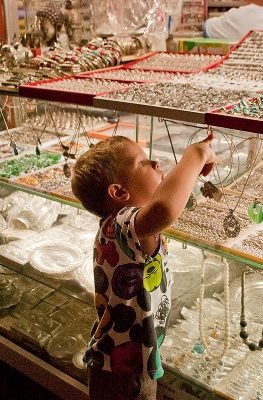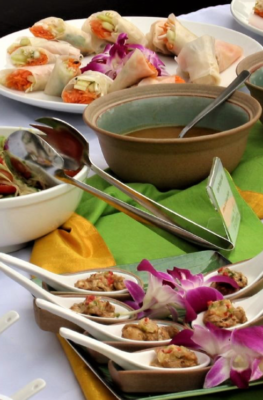Published on June 8, 2018
Loro blonyo from Indonesia. Image courtesy of Mike Aquino
Take a piece of Southeast Asia home with you, but not just any piece. Choose carefully, and you might just come across a souvenir that represents the perfect convergence of cultural cachet, portability and price – something you can proudly put up in your home for guests to gawk at for years to come!
Try one of these three souvenir ideas the next time you come visit – and take them with you when you go:
Loro Blonyo from Yogyakarta, Indonesia
I love bringing back souvenirs from trips; my favorite from Indonesia is this Loro Blonyo set from Yogyakarta.
The Loro Blonyo, literally translated from the Javanese for “two become one”, represent the home and harmonious family in Javanese folklore. They always come as a set – a male and female figure – and are placed side by side in the most important room of the house. Traditionally, loro blonyo are depicted wearing Javanese wedding attire, though artists have plenty of leeway depicting them in different traditional wear, with varied sizes as well.
Like Javanese culture, the Loro Blonyo has Hindu roots, deriving from a goddess of fertility (Dewi Sri) and her husband. Dewi Sri ensures a bountiful crop, thus her continuing popularity with farmers as well, who will dedicate a whole room in their houses to ornate depictions of the couple.
Of course, you don’t have to be a Javanese farmer to bring the loro blonyo home. I brought these papier-mache loro blonyo from Malioboro in Yogyakarta, Indonesia, and placed them on a table in the living room (right under the TV). Do they bring good luck and fertility, as devout Javanese believe? I won’t say one way or another – but I will say they remind me of an Indonesian culture I admire from afar.
Mike Aquino, Southeast Asia Time Traveler (Facebook|Twitter|Instagram)
Hornbill statue from Sarawak. Image courtesy of Karen Alexis
Kenyalang hornbill figure from Sarawak, Malaysia
While in Sarawak (in Malaysian Borneo), I ended up purchasing a wooden rhinoceros hornbill figure called a Kenyalang, which I purchased from a local shop in Kuching where profits go back to local artisans.
Kuching is a great place to shop for traditional wooden carvings made locally although it’s good to ask about the origin of the piece and how shops work with local artisans rather than purchasing something that is mass produced abroad with little benefit to the local community.
The hornbill plays a significant role in Dayak culture as it’s viewed as a messenger from above. For me, it was important to bring back a souvenir from my time in Borneo that had cultural significance that was unique and that also positively supported the local community.
I absolutely love my wooden hornbill, which has been displayed in my living room since I’ve returned from Borneo. (The wings are removable, which makes it easy to travel with!)
– Karen Alexis, Wanderlustingk (Facebook|Twitter|Instagram)
Bamboo mug from the Philippines. Image courtesy of Katherine Cortes
Bamboo mug from South Cotabato, the Philippines
The T’Boli community is one of the most culturally rich ethnic groups in the Philippines. They live peacefully in South Cotabato province and, as part of their livelihood, sell various types of souvenir, one of which we’d bought – a bamboo mug.
A bamboo mug is special in that it represents the traditional use of bamboos by Filipinos. Basically, this organic material is used not just for housing material but also for furniture and dinnerware, as well as other handicrafts. The T’Boli community showcases this root by its continuous creation of bamboo mugs.
Moreover, bamboo mugs are unique and aesthetically pleasing! Ours are proudly displayed in the dining room area and is a testament to local travels in the best locations in the Philippines.
Bamboo mugs are best used as display. They can also be used for drinking, but it should be coated with wax or sealant at first for hygienic purposes. A bamboo mug can be bought in South Cotabato for P25 each.
– Katherine Cortes, Taralets Anywhere (Facebook|Instagram)
Merlion souvenir, Singapore
Singapore’s merlion – a half-lion, half-fish that holds court at the waterfront Merlion Park – has given rise to a bustling souvenir industry, with its visage appearing on mugs, T-shirts, refrigerator magnets, and more.
As kitschy as it appears, the merlion represents very tangible elements of the nation it calls home. Its body symbolises Singapore’s humble beginnings as a fishing village when it was called Temasek, meaning “sea town” in Old Javanese. Its head represents Singapore’s original name, Singapura, or ‘lion city’ in Malay.
The icon is also a ‘must-see’ for tourists visiting Singapore, similar to other significant landmarks around the world.






